Rare and fascinating discovery in northernEngland, in the River Tyne, near the Roman town of Corbridge, not far from Hadrian’s Wall. In fact, a knife handle in the shape of a gladiator, a very rare object in these parts, has been found.Reporting the find is English Heritage, a nonprofit organization that manages four hundred cultural sites including historic buildings, monuments, and archaeological sites. The find, dating back some two thousand years, represents important evidence of gladiator-related celebrity worship, which extended to the furthest reaches of the Roman Empire.
Made of copper alloy, the handle depicts a gladiator of the secutor (“pursuer” category, so called because of his mode of combat: that is, his role was to fight against the reziario, the net-armed gladiator, who having no shields to protect himself from the secutor tended to keep him at a distance and consequently the secutor had to pursue him). The secutor was known for his heavy equipment, consisting of a large shield, a sword, and a helmet that entirely covered his face. The secutor depicted in the knife handle found in England is particularly interesting because of his left-handed pose, a feature considered unfortunate in antiquity, but which may represent a gladiator who actually existed. Some gladiators, in fact, were trained to fight left-handed in order to gain a strategic advantage over their opponents, since the population is more right-handed than left-handed (in fact, this advantage is also characteristic of some of today’s sports such as fencing or boxing).
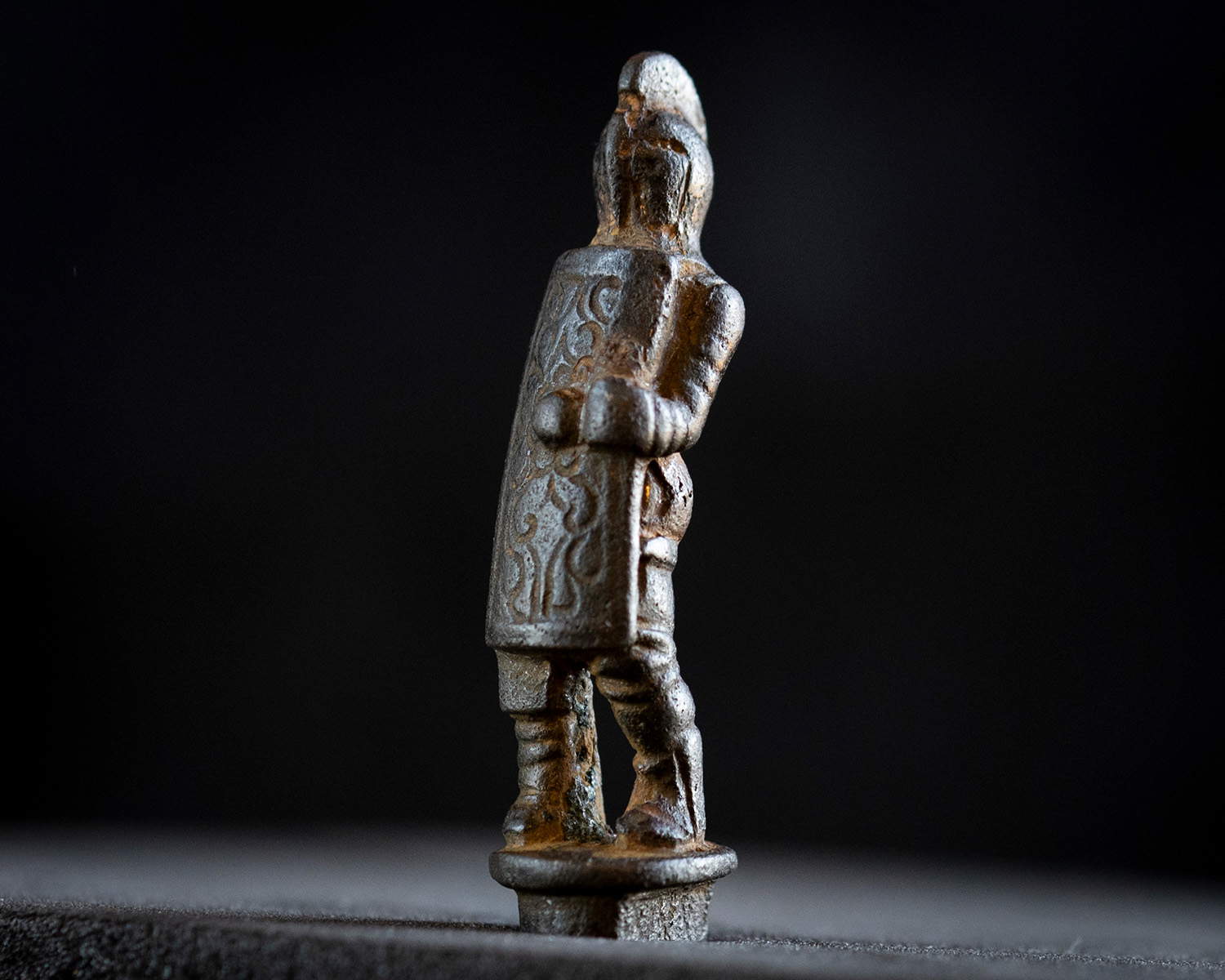
The knife handle is not only a fine artifact, but also rare evidence of the fascination gladiators exerted on the Roman population, even in outlying territories such as Britain. Although gladiatorial combat was more common in the urban centers of the Empire, the find in Corbridge shows that the culture of combat and the cult of gladiatorial celebrities also spread to areas as far away as Hadrian’s Wall.
The secutor, with his mighty figure and shining armor, represented the ideal of courage and strength, values that found expression not only in the arenas but also in everyday objects such as knife handles and other decorated artifacts.
Dr. Frances McIntosh, curator of English Heritage’s collections for Hadrian’s Wall and the Northeast, said, "It is rare to find a gladiator artifact in Britain, and to find such a well-preserved and interesting piece is particularly remarkable. Despite being enslaved and marginalized by society because of their profession, gladiators could become great celebrities. Gladiators and their performances were an integral part of Roman cultural life, which took place throughout the Roman Empire. The phenomenon inspired the creation of sports memorabilia, such as decorated ceramics and glass cups, lamps, and figurines. Gladiators had sex appeal, and there are cases of high-ranking Roman women who ’fell in love’ with these humble fighters, despite the great social difference. This beautifully crafted knife handle is a testament to how pervasive this celebrity cult was, reaching as far as Hadrian’s Wall on the borders of the Roman Empire. Even today, nearly 2,000 years later, the fascination with gladiators persists and has further spread into modern popular culture, as evidenced by the enthusiasm generated by the new sequel to the film The Gladiator."
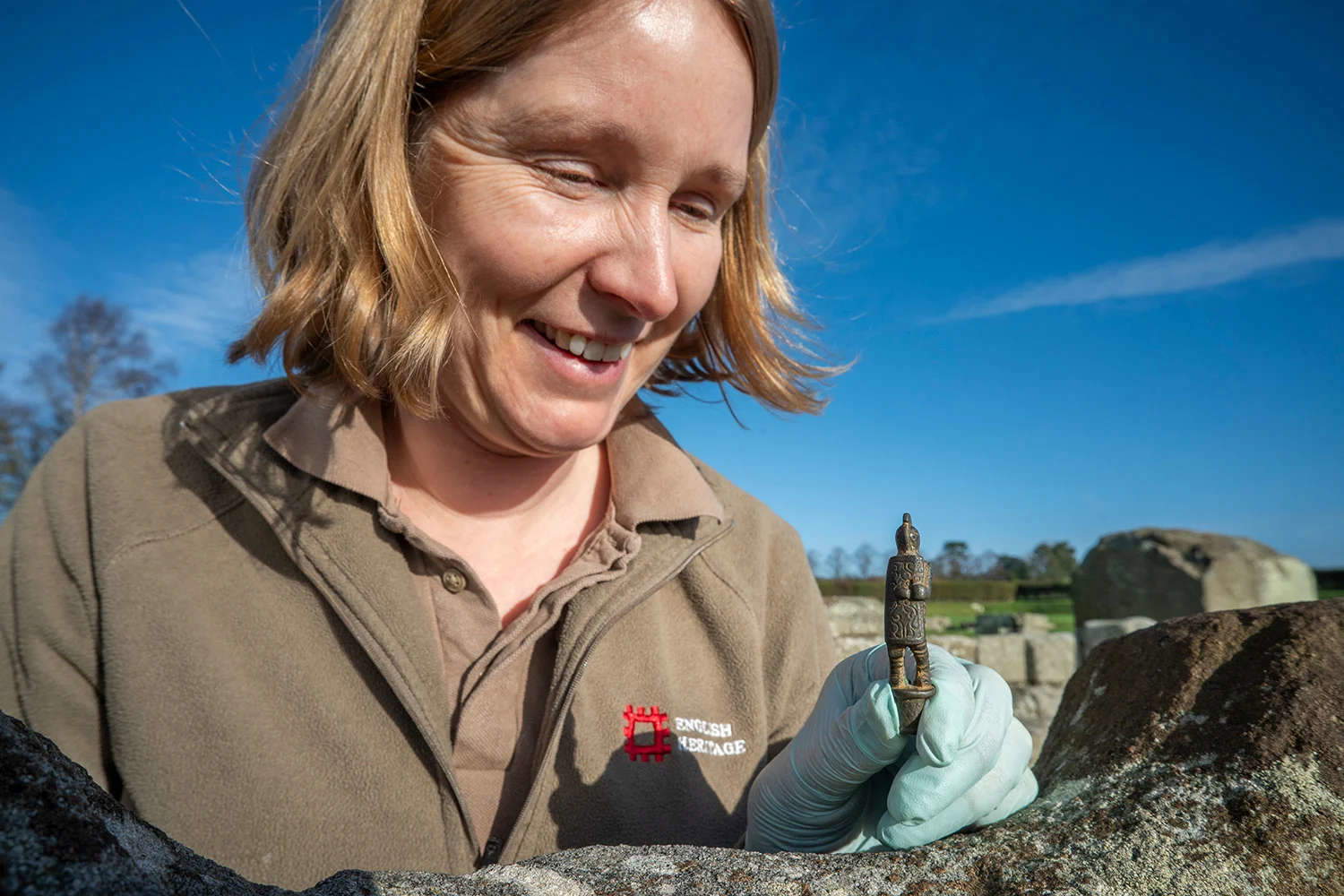
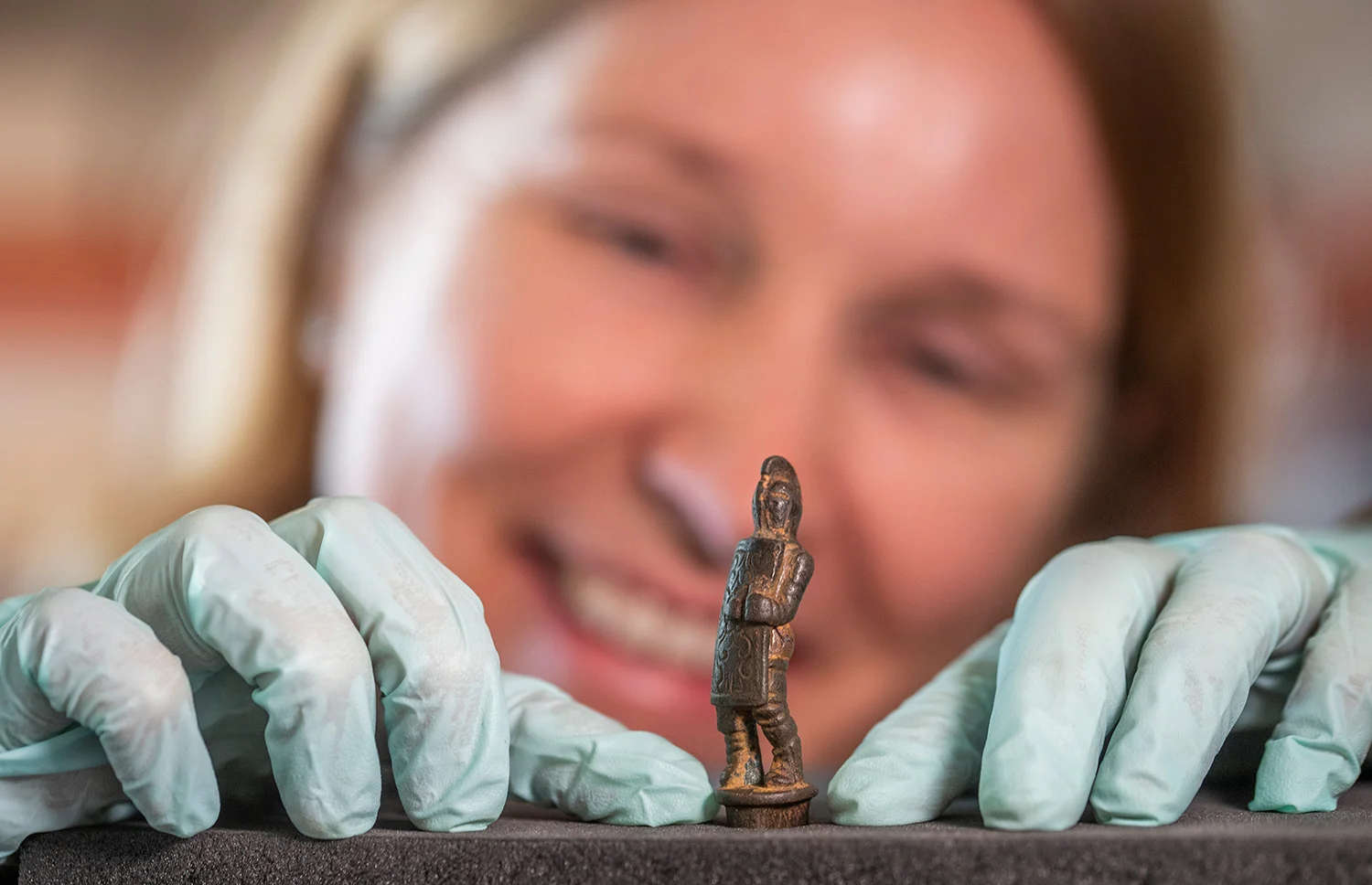
Corbridge, formerly known as Coria, was a bustling frontier town along Hadrian’s Wall, crucial to the region’s military and commercial activities. The Tyne River, which runs through the town, has yielded numerous Roman artifacts, but the knife handle represents one of the most exceptional finds in recent years. Archaeologists believe the knife may have been lost accidentally or thrown deliberately into the river, perhaps as a votive offering.
The discovery of the knife handle adds to an already extensive collection of gladiator-related artifacts held by English Heritage. Prominent among them is a samia ceramic bowl found in the Roman fort at Richborough, Kent. The bowl depicts scenes of gladiatorial combat, including a victorious gladiator raising his shield and arm in triumph, while his defeated opponent is kneeling before him. Richborough, with its amphitheater and cells for gladiators and animals, was an important center for gladiatorial games in Britain.
At Wroxeter, Shropshire, and Aldborough, Yorkshire, glass vials have been found that probably contained perfumes or aromatic waters infused with saffron, used to refresh spectators during performances. Other objects of interest include a painted glass fragment, found in Corbridge itself, depicting a leopard. This fragment has recently been identified as part of a scene from venatio, the famous wild animal hunts that enriched the day of the gladiatorial games.
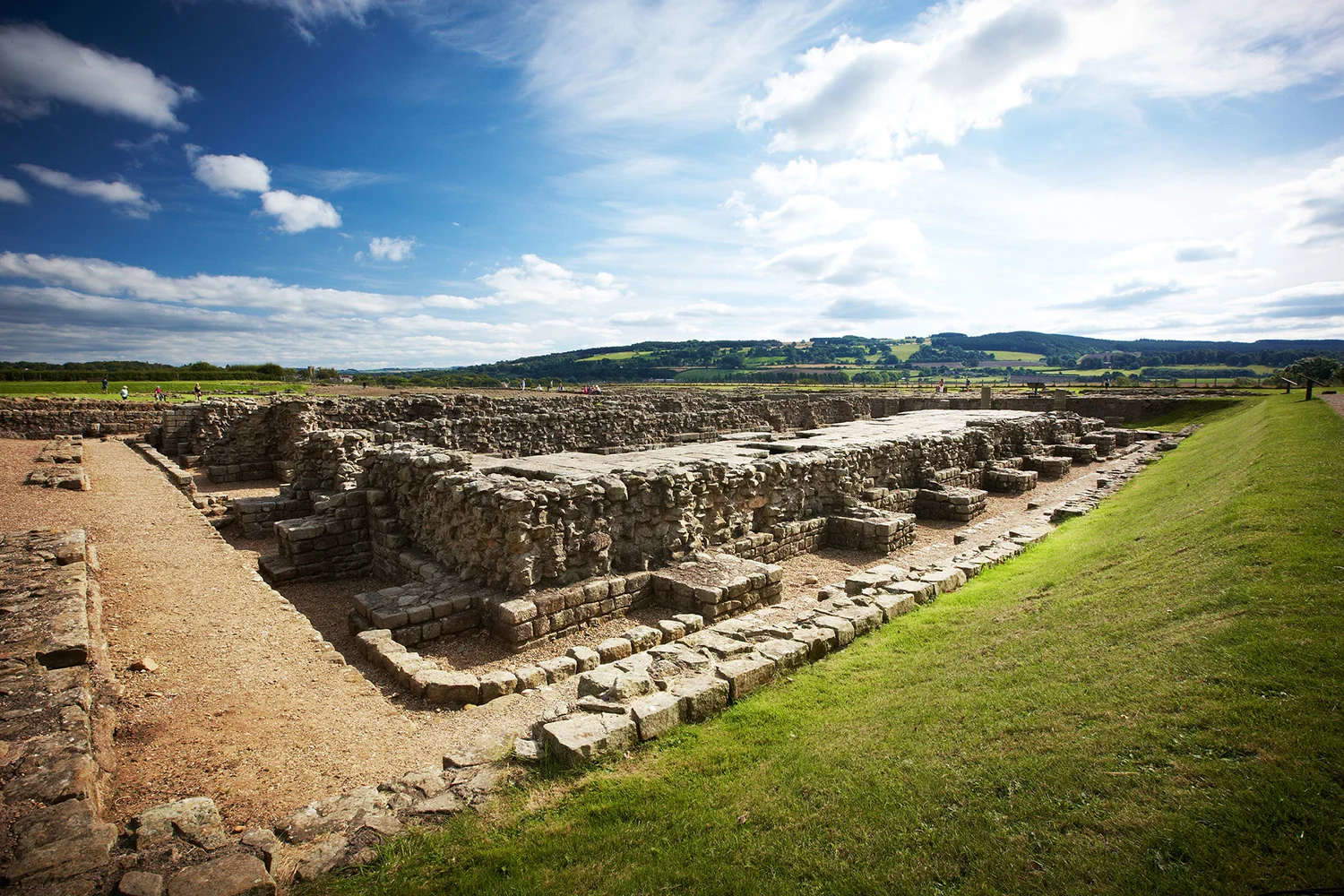
The knife handle will be exhibited in 2025 at the museum of the Roman town of Corbridge, in a display that will include other artifacts found in the River Tyne. This exhibition will offer the public a unique opportunity to explore the daily life and cultural fascinations of ancient Roman Britain.
The exhibition will be a tribute to Corbridge’s crucial role as a meeting point between Roman culture and local people. Visitors will be able to admire the knife handle up close and discover details of an era that continues to reveal its secrets through archaeological discoveries. The fascination of gladiators after all was not limited to arena fighting, but permeated many aspects of Roman society. They were revered as symbols of strength, skill and spectacle, figures who combined entertainment and politics. Corbridge’s knife handle, with its depiction of a secutor, thus represents a window into a world in which ritualized violence mingled with popular culture and in which even everyday objects reflected the collective imagination.
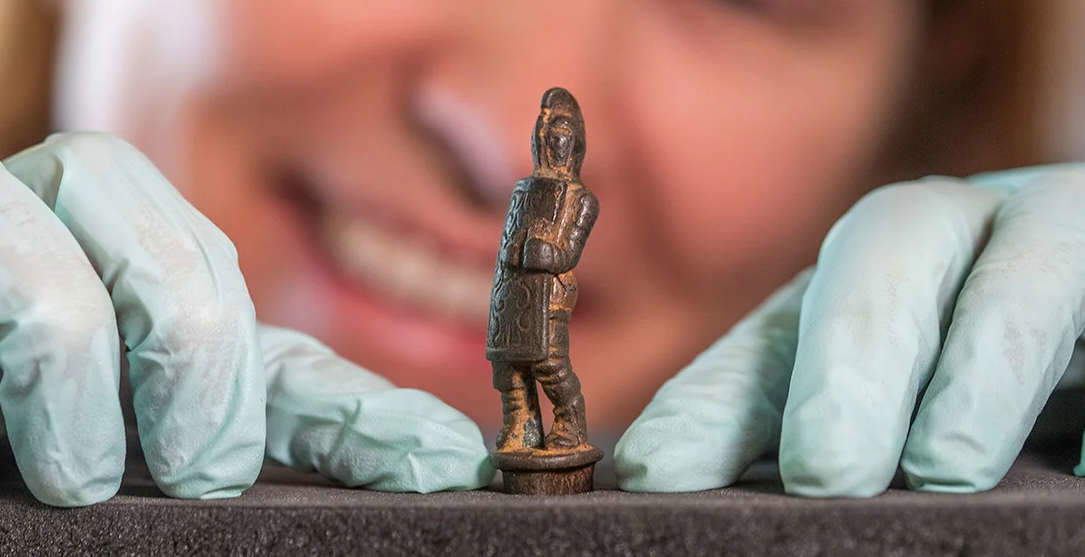 |
| Rare discovery in England: gladiator-shaped knife found! |
Warning: the translation into English of the original Italian article was created using automatic tools. We undertake to review all articles, but we do not guarantee the total absence of inaccuracies in the translation due to the program. You can find the original by clicking on the ITA button. If you find any mistake,please contact us.